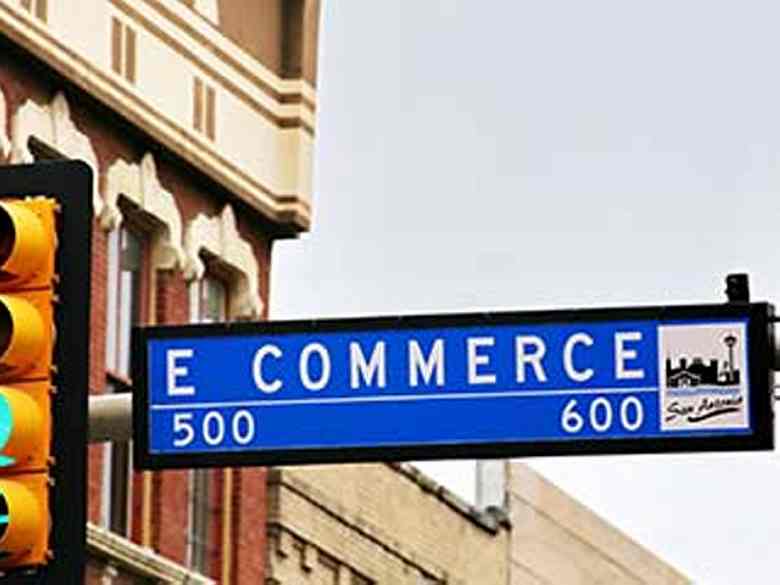B2B ecommerce was already rising quickly when the worldwide pandemic struck in early 2020, accelerating the wholesale trade’s digital transformation. And whereas it might be doable to checklist many trade shifts for the approaching yr, 5 tendencies may very well be particularly disruptive.
All of those may produce vital adjustments in how producers, manufacturers, distributors, retailers, and customers work together in 2021 and past.
5 B2B Ecommerce Tendencies for 2021
1. Drop transport. For a few years, manufacturers (which can or could not manufacture their very own merchandise) and distributors have been drop transport orders on retailers’ behalf.
A buyer ordering, for instance, Ariat boots from any variety of omnichannel retail shops might need his order shipped straight from an Ariat warehouse in California.
Equally, when a consumer visits the Sur La Desk web site and purchases a small kitchen equipment, a distributor or producer will seemingly fulfill the order, not the retailer.
This development could have accelerated in 2020 for a number of causes.
First, the shutdowns in March, April, and past performed havoc with ecommerce provide chains. In some instances, this compelled wholesale companies to put money into achievement infrastructure.
Second, ecommerce demand spiked, forcing some retailers that had beforehand carried out their very own achievement to show to suppliers.
Third, the shutdowns compelled many retailers into chapter 11, together with J.C. Penney, Neiman Marcus, Lord & Taylor, GNC, and extra. Many of those companies stored promoting on-line while in chapter due to drop transport. Their monetary state of affairs made it tough to order truckloads of merchandise, however, with drop transport, they may proceed.
In all instances, wholesalers and retailers modified their habits due to the pandemic, and people new habits aren’t prone to change quickly. B2B ecommerce may develop due to the continued and accelerated development of drop transport.
2. Ecommerce integration. One of many keys to extra drop transport was a rise in ecommerce integration. Regardless of being shorthanded due to Covid-driven furloughs, many B2B corporations developed integrations with their retail prospects.
Generally, these integrations took benefit of software programming interfaces that made it doable to attach platforms and knowledge. This enabled manufacturers and distributors to offer retailers with correct stock information, provide chain particulars, and different important enterprise knowledge.
What’s extra, ecommerce integrations made it doable to ship that knowledge and place orders in new channels, together with on cellular gadgets both by way of native apps or progressive net apps.
B2B suppliers and retailers alike made important investments in these ecommerce integrations, and the one option to generate a return is to maintain utilizing them.
For B2B wholesalers, ecommerce is turning into Predominant Road. Photograph: Mark Konig.
3. Purchaser expertise. Elevated B2B ecommerce integration helps to gasoline the development towards higher purchaser experiences.
As Amazon identified, 73 p.c of on-line enterprise consumers are millennials. And 68 p.c of these buying professionals would fairly analysis merchandise on-line (61 p.c will use a cellular gadget) than converse with a salesman.
The normal B2B gross sales channels aren’t as in style as up to now.
In 2021, count on B2B suppliers to make use of client ecommerce know-how and practices to draw new enterprise prospects and cater to a distinct form of buying skilled.
B2B ecommerce purchasing experiences will rival B2C with higher web sites, gross sales channels, cellular apps, and an applicable degree of personalization, integration, and customization.
4. Cost choices. With new channels, integrations, and shopping for experiences will come new cost choices, together with new types of B2B financing.
In 2021, we are able to count on B2B corporations to streamline their accounts receivable infrastructure. This may very well be so simple as transferring away from guide processes similar to bodily mailing invoices and accommodating funds in new methods.
No matter options emerge, we are able to count on these new cost choices to handle a number of issues inside the present system, together with digital transaction charges, cost delays, remittance knowledge processing, and transaction visibility.
Thus digital funds for B2B transactions could come to resemble a number of the retail choices.
5. Shopper-like advertising and marketing. Probably the most speculative of my 5 disruptive B2B ecommerce tendencies has to do with advertising and marketing. B2B suppliers will more and more market like consumer-facing companies. That is already the case for a lot of client manufacturers. Nike, Reebok, Levi’s, Carhartt, and others have at all times marketed their merchandise on to customers.
However that’s not the case for each B2B vendor. It should seemingly change, nonetheless, in 2021.


